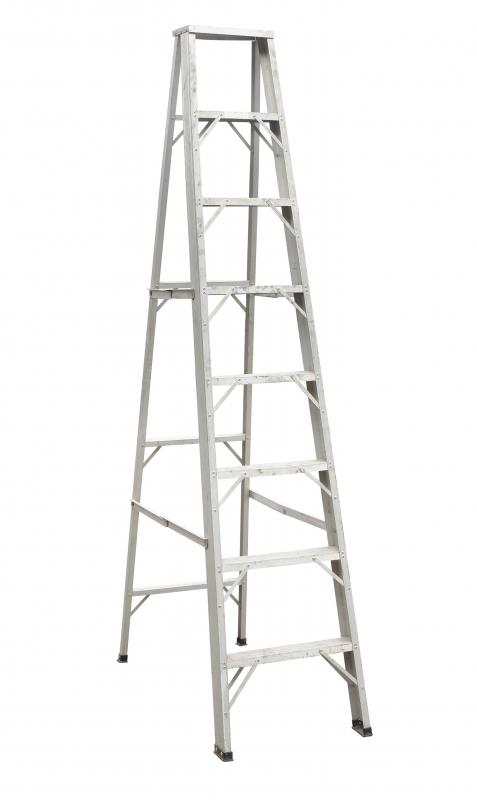At WiseGEEK, we're committed to delivering accurate, trustworthy information. Our expert-authored content is rigorously fact-checked and sourced from credible authorities. Discover how we uphold the highest standards in providing you with reliable knowledge.
What Should I Know About Garage Door Installation?
The installation of garage doors can be a daunting task for any home handyman. Those attempting garage door installation should have some level of experience with home repair. Many inexperienced home owners who attempt to do the procedure themselves find themselves wishing they had hired a handyman. For those with a few projects under their belt, it can be a money saving task.
There are two types of garage door spring systems. A standard torsion spring system can be quite dangerous for homeowners to replace. They consist of a spring and drum system that is manually wound and under great pressure. These need to be handled by trained professionals. An extended spring system, on the other hand, is not manually wound and is safe for do-it-yourself projects. Those attempting to replace their door should check with manufacturer specifications if they are not sure which system they have.

All garage doors come with installation instructions, but most will follow the same basic process. The first step should always be to become familiar with the instruction manual. It is always easiest to do a project when the user has some forehand knowledge of how the project will fit together. The standard tools needed for installation are a level, tape measure, electric screwdriver, pliers and a hammer.

Garage doors come in multiple sections and each section has an assembly that must be completed before it is hung in the opening. All sections should be individually assembled prior to hanging them. A sawhorse or workbench can be a helpful tool to have for assembly of these door pieces. As with many home projects, this step can take longer than anticipated. Therefore, it is a good idea to get this finished before taking down the old door and leaving the garage exposed to the elements.
The next step is to remove the old garage door. Installers should be sure that they are not working with a standard torsion system before attempting to cut or remove any springs or wiring. These springs can be extremely dangerous and can cause serious injury if not removed properly. After the door and old track is removed, inspect the framing around the door to be sure it is free of rot and damage. Some manufacturers will require particular preparations in the door jambs before beginning garage door installation, so be careful to check your instructions before beginning the next step.
Perhaps the most essential part of garage door installation is to be sure the first section of the door is level. All the remaining sections stack on top of this first piece. If it is even the slightest bit off, the problem will only be compounded in the next layers and the door could be extremely crooked in the end. The brackets installed at the corners on this first section need to be very carefully placed and tightened. They will later hold the weight of the door while lifting it and can easily pull loose if not tightened well enough.
After the first section of door is installed, the usual next step in garage door installation is to attach the first section of track. Follow the individual manufacturer's instructions here to install the rollers as well. After this piece is intact, install the next section of door, next section of track and rollers, and repeat the process for each section until the door is completed. As each section is installed, be sure to check the level on each piece to ensure that the door has not gone crooked.
The horizontal tracks are installed across the ceiling next. They slip into or connect to the wall tracks and are braced from the ceiling. Some users find it helpful to use a ladder or similar support device to hold the horizontal track up while they work on this bracing. As with all parts of garage door installation, it is important to use the level on the track during this final step.
A spring system or torque tube are the last thing to install. These are installed after a mechanical opener if one will be installed. Installation of these spring systems vary greatly between manufacturers, so the manual should be consulted.
AS FEATURED ON:
AS FEATURED ON:












Discussion Comments
Thanks for all the great advice. We need help with our garage and this is really helpful!
I would like to share my view, as a manual garage door installation is much easier than an automatic garage door installation. The one we choose generally depends on what kind of door we have.
Automatic doors require not only the installation of a heavy door, but the motor and cables as well. To install, we need to secure the door with a torsion spring system. This kind of installation generally requires only a drill. Very informative post!
Post your comments